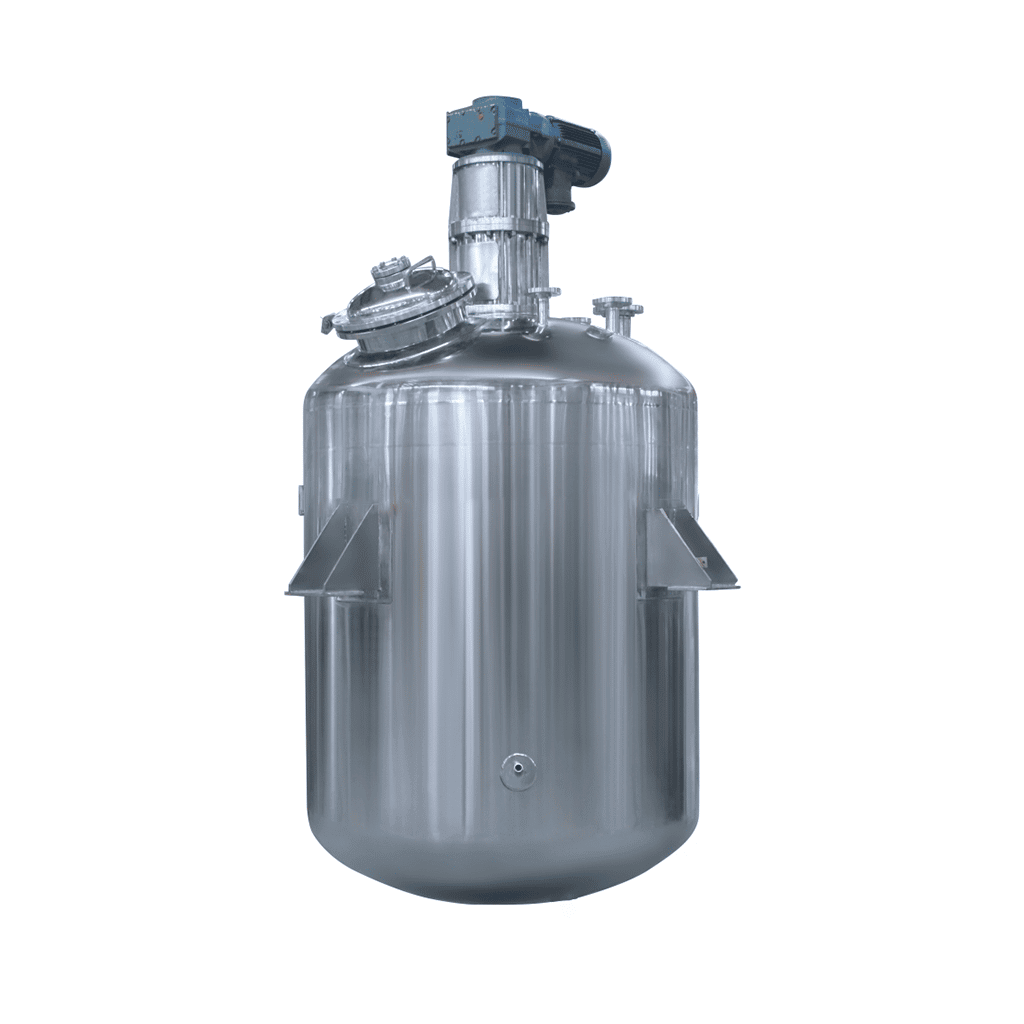
-24-1.jpg)
Stainless Steel Reactor
Stainless Steel Reactor: used in dairy products, sugar, beverages, and other fields
Material
stainless steel (316, 304)
Capacity (L)
10-10000+
Mixing system
anchor, paddle, frame and others
Heating system
electric heating, oil heating and others
A stainless steel reactor is a stainless steel container equipment. The stainless steel reactor consists of a kettle body, a kettle lid, a stirrer, a jacket, a bracket, a transmission device, a shaft seal device, etc. Materials and openings can be made according to user needs and process requirements. Stainless steel reactors are mainly used for stirring, homogenizing, and mixing storage of dairy products, sugar, beverages, food, and various pharmaceuticals.
Request a quoteThe stainless steel reactor is a precision equipment. The sealing ring adopts the form of cone contact sealing, and the purpose of sealing is achieved by tightening the main bolts to press them against each other. Special care must be taken to seal the cone to avoid damage from various impacts.

The upper part of the stainless steel reactor spacer is equipped with a tachometer coil. When the integrated stirrer and the inner magnetic ring rotate, the tachometer coil generates an induced electromotive force, which corresponds to the stirring speed. The potential is transmitted to a tachometer, which displays the stirring speed. The coupling is mainly composed of a pair of inner and outer magnetic rings with strong magnetic force, with a pressure-bearing gasket in the middle. The stainless steel reactor stirrer is driven by a servo motor through a coupling.

Precautions for using stainless steel reactor
1.The stainless steel reactor should be used in the designated place and operated according to the instruction manual.
2.Identify the test pressure, working pressure, and maximum working temperature engraved on the stainless steel reactor, and use it within the allowed conditions.
3.Safety valves and other safety devices must be inspected regularly to meet specified requirements.
4.When installing the pot lid, first place the stainless steel reactor body, then place the pot lid in a fixed position and carefully install it on the kettle body. When tightening the main bolts, they must be tightened symmetrically and gradually. The force should be uniform, and the kettle cover should not be tilted to one side to achieve a good sealing effect, nor should it exceed the specified tightening torque to prevent the sealing surface from being squeezed or accelerated wear.
Selection of stainless steel reactor motor
1.Whether the material is sticky;
The torque is determined based on factors such as the maximum viscosity of the material (the reaction is dynamic and the viscosity will also change), the blade diameter and front cross-sectional area of the mixer, the mixing speed, etc., to determine the maximum torque of the mixer. The motor runs at this speed to prevent overloading.
The maximum torque of the selected motor should be greater than 1.5 times the maximum torque required for the stirring reaction to ensure safety and ensure that the steps are always at the required speed.
Motor selection should be based on torque, not power. Motors with the same power and speed do not necessarily have the same torque, especially AC motors and DC motors, which are very different. For a single motor, the maximum torque at different speeds is also different.
2.Speed requirements;
For example, if the speed requirement is not high, you can choose a reduction motor; choose a larger power motor, and then use a frequency converter to adjust the speed.
3.Whether the motor is explosion-proof;
Stainless steel reactor hydraulic system (The function of the hydraulic system is to increase force by changing pressure. A complete hydraulic system consists of five parts, namely power components, actuating components, control components, and auxiliary components (accessories).) and hydraulic oil. Hydraulic systems can be divided into two categories: hydraulic transmission systems and hydraulic control systems. The main function of the hydraulic transmission system is to transmit power and motion. Materials and products are flammable and explosive. If the materials and products are flammable and explosive, explosion-proof motors should be selected.




